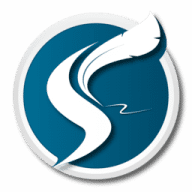Script Studio for Mac
Professional Screenwriting Software.

Professional Screenwriting Software.
Script Studio (formerly Movie Outline) is a writer's toolbox for screenwriters, playwrights, and novelists. It helps you plan your story outline, develop characters, structure your narrative, and professionally format your movie script, stageplay, TV show or manuscript. It was developed by a produced/screenwriter to take the complexity out of the script- and novel-writing process, allowing you to focus on your story while the software handles the formatting and pagination.
Its design is based on the principle of step-outlining, which allows you to plan and build your cinematic structure scene-by-scene, or your novel chapter-by-chapter. You can color-code your structure into acts and sequences, use templates such as "The Hero's Journey," and compare the progress of your own story side-by-side with scene-by-scene breakdowns and analyses of 12 successful Hollywood movies

Comments
User Ratings